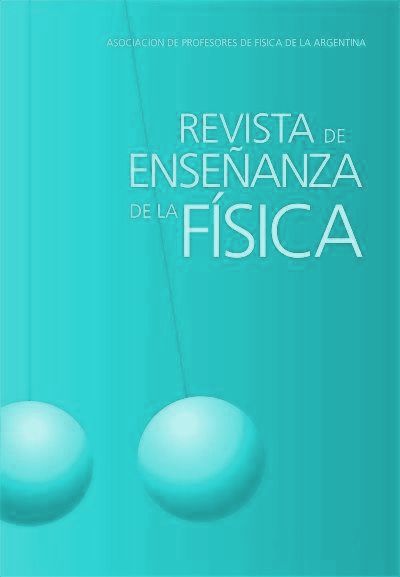Remote laboratory for electromagnetic induction based on an industrial measurement device
Keywords:
Remote laboratory, Electromagnetic induction, Measurement device, Magnetic sensor, Physics teachingAbstract
This paper presents general characteristics of the construction and application of a remote laboratory whose main theme is electromagnetic induction. The design is based on a common problem in the industry, the detection of failures in rolling metal devices. It features mechanical elements, an experimental magnetic proximity sensor, a data acquisition system, and a user interface. The recording of the sensor output signal allows the analysis and interpretation of different electrical and/or mechanical phenomena. The mechanical system to be analyzed and the measurement device are integrated into a single experiment, which allows the construction of different activities ranging from the analysis of the physical phenomena involved to the analysis of the electrical signal of the sensor and its relationship with the analyzed mechanical system.
References
Alam, S., Cartledge, C. L. y Nelson, M. L. (2014). Support for various HTTP methods on the web. arXiv preprint arXiv:1405.2330
Arguedas-Matarrita, C. y Concari, S. B. (2018). Características deseables en un Laboratorio Remoto para la enseñanza de la física: indagando a los especialistas. Caderno Brasileiro de Ensino de Física, 35(3), 702-720.
Ávila-Camacho, F. J. y Moreno-Villalba, L. M. (2023). Internet de las Cosas (IoT) Retos para las Empresas en la era de la Industria 4.0. Pädi Boletín Científico de Ciencias Básicas e Ingenierías del ICBI, 10(20), 10-16.
Azzedin, F. y Alhazmi, T. (2023). Secure data distribution architecture in IoT using MQTT. Applied Sciences, 13(4), 2515.
Https://doi.org/10.3390/app.13042515
Camacho, J. M. y Sosa, V. (2013). Alternative method to calculate the magnetic field of permanent magnets with azimuthal symmetry. Revista mexicana de física E, 59(1), 8-17.
Fielding, R. T. (2000). Architectural styles and the design of network-based software architectures. [Tesis doctoral, Universidad de California]. https://www.ics.uci.edu/~fielding/pubs/dissertation/fielding_dissertation.pdf
Haro, E., Guarda, T., Peñaherrera, A. O. Z. y Quiña, G. N. (2019). Desarrollo backend para aplicaciones web, servicios web restful: Node. js vs spring boot. Revista Ibérica de Sistemas e Tecnologias de Informação, E17, 309-321.
Manzanares, J. A., Bisquert, J., Garcia‐Belmonte, G. y Fernández‐Alonso, M. (1994). An experiment on magnetic induction pulses. American Journal of Physics, 62(8), 702-706.
Pini, A. (6 de agosto 2021). The Fundamentals of Proximity Sensors: Their Selection and Use in Industrial Automation.
Riad, I. F. (2023). Measuring g using magnetic induction. Physics Education, 58(3), 035008.
Romero, R. E., de la Vega, R. J., Rossi, S., Ferraggine, G., Greco, A. y García, M. (noviembre 2018). Device For Measuring Mechanical Variables for Fault Detection in Cement Production Kilns. Presentado en 26° Congreso Argentino de Control Automático, 7-9 de Junio, Universidad de Palermo, Buenos Aires.
Downloads
Published
How to Cite
Issue
Section
License

This work is licensed under a Creative Commons Attribution-NonCommercial-NoDerivatives 4.0 International License.
Aquellos autores/as que tengan publicaciones con esta revista, aceptan los términos siguientes:Los autores/as conservarán sus derechos de copiar y redistribuir el material, bajo los términos estipulados en la Licencia de reconocimiento, no comercial, sin obras derivadas de Creative Commons que permite a terceros compartir la obra bajo las siguientes condiciones:
- Reconocimiento — Debe reconocer adecuadamente la autoría, proporcionar un enlace a la licencia e indicar si se han realizado cambios. Puede hacerlo de cualquier manera razonable, pero no de una manera que sugiera que tiene el apoyo del licenciador o lo recibe por el uso que hace.
- NoComercial — No puede utilizar el material para una finalidad comercial.
- SinObraDerivada — Si remezcla, transforma o crea a partir del material, no puede difundir el material modificado.
- Los autores/as podrán adoptar otros acuerdos de licencia no exclusiva de distribución de la versión de la obra publicada (p. ej.: depositarla en un archivo telemático institucional o publicarla en un volumen monográfico) siempre que se indique la publicación inicial en esta revista.
- Se permite y recomienda a los autores/as difundir su obra a través de Internet (p. ej.: en archivos telemáticos institucionales o en su página web) antes y durante el proceso de envío, lo cual puede producir intercambios interesantes y aumentar las citas de la obra publicada. (Véase El efecto del acceso abierto).














